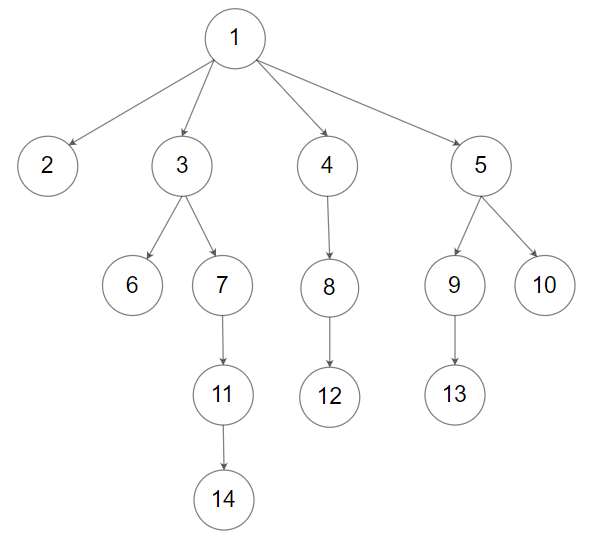标签:reverse push tput tween des could cto val nod
Given an n-ary tree, return the postorder traversal of its nodes‘ values.
Nary-Tree input serialization is represented in their level order traversal, each group of children is separated by the null value (See examples).
Follow up:
Recursive solution is trivial, could you do it iteratively?
Example 1:

Input: root = [1,null,3,2,4,null,5,6] Output: [5,6,3,2,4,1]
Example 2:

Input: root = [1,null,2,3,4,5,null,null,6,7,null,8,null,9,10,null,null,11,null,12,null,13,null,null,14] Output: [2,6,14,11,7,3,12,8,4,13,9,10,5,1]
Constraints:
1000[0, 10^4]class Solution { public: vector<int> postorder(Node* root) { vector<int> res; postorder(root,res); return res; } void postorder(Node *root, vector<int> &res) { if(NULL==root)return; for(Node *n:root->children) postorder(n,res); res.push_back(root->val); } };
循环版本
root放入数组,然后取出数组末尾元素,把所有子节点插入数组,root值保存到结果中,所以这样得到的结果其实是反的,所以最后要用reverse
class Solution { public: vector<int> postorder(Node* root) { vector<int> res; vector<Node*> node; if(root)node.push_back(root); while(!node.empty()) { Node *p=node.back(); node.pop_back(); for(Node *n:p->children) node.push_back(n); res.push_back(p->val); } reverse(res.begin(),res.end()); return res; } };
590. N-ary Tree Postorder Traversal
标签:reverse push tput tween des could cto val nod
原文地址:https://www.cnblogs.com/lychnis/p/11964511.html